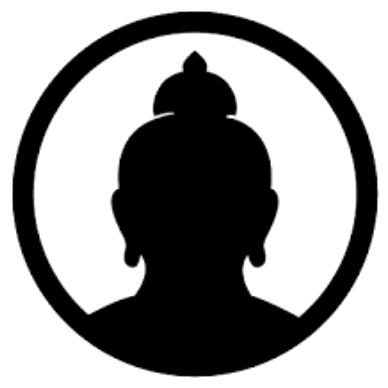“There will be a struggle between the mind and body, between attending to the physical injury and maintaining identity by continuing to train.”
YOU MIGHT ALSO LIKE
CLEAR ALL
BY TOPIC
BY TYPE
FILTER

TOPIC
- Mindfulness Meditation (32)
- Self-Care (31)
- BIPOC Well-Being (29)
- Well-Being (29)
- Stress Management (28)
- Anxiety (27)
- Kids and Sports (26)
- Performance Pressure (25)
- Depression (23)
- Mindfulness Practices (23)
- Physical Health (23)
- Illness and Injury (22)
- Self-Reflection Practices (21)
- Buddhism (19)
- Self-Mastery (18)
- Self-Pressure (18)
- Chronic Pain (17)
- Somatic Practices (17)
- Awareness (16)
- Black Well-Being (16)
- Addiction (15)
- Parenting (15)
- Exercise (14)
- Happiness (14)
- LGBTQIA Well-Being (14)
- Stress (14)
- Burnout (13)
- Peak Performance (13)
- Self-Development (13)
- Breathwork (12)
- Diet and Nutrition (12)
- Neuroscience (12)
- Performance Anxiety (12)
- Women’s Well-Being (12)
- Compassion (11)
- Focus (11)
- Honoring Emotion (11)
- Life Challenges (11)
- Spiritual Practices (11)
- Brain Health (10)
- Building Character (10)
- Cancer (10)
- Eating Disorders (10)
- Goal Setting (10)
- Presence (10)
- Resilience (10)
- Trauma Healing (10)
- Work-Life Balance (10)
- Emotional Intelligence (EQ) (9)
- Entrepreneurship (9)
- Inner Peace (9)
- Leadership (9)
- Lovingkindness Meditation (9)
- Mental Health Challenges (9)
- Self-Acceptance (9)
- Self-Discovery (9)
- Courage (8)
- Gender Discrimination (8)
- Gratitude (8)
- Growth Mindset (8)
- Self-Esteem (8)
- Self-Limiting Beliefs (8)
- Yoga (8)
- Betrayal (7)
- Caregiver Well-Being (7)
- Chronic Anxiety (7)
- Chronic Health Conditions (7)
- Clinical Depression (7)
- Disabled Well-Being (7)
- Embodiment (7)
- Life-Altering Injury (7)
- Neuroplasticity (7)
- Pleasing Parents (7)
- Search for Purpose (7)
- Self-Love (7)
- Aging (6)
- Anger Management (6)
- Body Mapping (6)
- Body Scan Meditation (6)
- Community Healing (6)
- Consciousness (6)
- Criticism and Rejection (6)
- Endurance (6)
- Female Empowerment (6)
- Habits of Mind (6)
- Healthy Eating (6)
- Letting Go (6)
- Living with Illness (6)
- Loneliness (6)
- Movement Meditation (6)
- Plateauing (6)
- Psychology (6)
- Regret (6)
- Self-Actualization (6)
- Self-Healing (6)
- Self-Worth (6)
- Setting Limits and Boundaries (6)
- Suffering (6)
- Suicide (6)
- Talk Therapy (6)
- Values (6)
- Activism/Service (5)
- ADD/ADHD (5)
- Addiction Recovery (5)
- Body Image (5)
- Connection with Nature (5)
- Discrimination (5)
- Empathy (5)
- Epigenetics (5)
- Failure (5)
- Grit (5)
- Indigenous Well-Being (5)
- Inner Strengths (5)
- Intention (5)
- Lovingkindness (5)
- Motivation (5)
- Positive Self-Talk (5)
- Racism (5)
- The Feldenkrais Method (5)
- Transgender Well-Being (5)
- Trauma (5)
- Young Adult Well-Being (5)
- Anger (4)
- Authenticity (4)
- Belonging (4)
- Child’s Emotional Growth (4)
- Child’s Trauma (4)
- Climate Change (4)
- Cognitive Behavioral Therapy (4)
- Compassion Meditation (4)
- Confidence (4)
- Conflict Resolution (4)
- Drug Addiction (4)
- Dysfunctional Childhood (4)
- Empowerment (4)
- Family Dynamics (4)
- Guided Meditation (4)
- Healing Approaches (4)
- Identity (4)
- Inner Life (4)
- Kindness (4)
- Latinx Well-Being (4)
- Men’s Well-Being (4)
- Personal Development (4)
- Positive Thinking (4)
- PTSD (4)
- Racial Discrimination (4)
- Relationship with Time (4)
- Rest (4)
- Self-Compassion (4)
- Self-Control (4)
- Self-Expression (4)
- Shame (4)
- Sleep (4)
- Transcendental Meditation (4)
- Visualization (4)
- AAPI Well-Being (3)
- Acceptance (3)
- Child’s ADD/ADHD (3)
- Collaboration (3)
- Creative Well-Being (3)
- Death or Loss of a Loved One (3)
- Decision Making (3)
- Energy Healing (3)
- Enlightenment (3)
- Grief (3)
- Habit Formation (3)
- Homophobia (3)
- Imagination and Creativity (3)
- Insight (Vipassana) Meditation (3)
- Intergenerational Trauma (3)
- Joy (3)
- Lifestyle Medicine (3)
- Mantra Meditation (3)
- Mentoring (3)
- Neurodiversity (3)
- Productivity (3)
- Racial Healing (3)
- Racial Justice (3)
- Self-Realization (3)
- Social Responsibility (3)
- Speaking Your Truth (3)
- Spiritual Awakening (3)
- Spiritual Development (3)
- Spiritual Growth (3)
- Spiritual Life (3)
- The Yips (3)
- Tibetan Buddhism (3)
- Trauma-Informed Therapy (3)
- Vulnerability (3)
- Walking Meditation (3)
- Weight Concerns (3)
- Work Challenges (3)
- Yoga Therapy (3)
- Zen Meditation (3)
- Anorexia (2)
- Autoimmune Disease (2)
- Ayahuasca (2)
- Chakra Meditation (2)
- Chanting (2)
- Christianity (2)
- Comparing Belief Traditions (2)
- Conscience (2)
- Cross-Cultural Dynamics (2)
- Curiosity (2)
- Dharma (2)
- Disconnection (2)
- Divorce and Breakup (2)
- Fear (2)
- Fellowship and Community (2)
- Finding Meaning (2)
- Forest Bathing (2)
- Forgiveness (2)
- Friendship (2)
- Gender Identity (2)
- Generosity (2)
- Insomnia (2)
- Integrative Medicine (2)
- Kirtan Music (2)
- Laughter Therapy (2)
- LGBTQIA Sexuality (2)
- Longevity (2)
- Negative Self-Talk (2)
- Neuropsychology (2)
- Nonbinary Well-Being (2)
- Offering Support to Others (2)
- Patience (2)
- Perception (2)
- Problem Solving (2)
- Psychedelic-Assisted Therapy (2)
- Relationship Challenges (2)
- Retirement (2)
- Ritual (2)
- Science and Spirituality (2)
- Sexual Assault or Abuse (2)
- Sleep Disorders (2)
- Social Justice (2)
- Somatic Experiencing (2)
- Spirituality and Health (2)
- Spirituality and Politics (2)
- T’ai Chi (2)
- Traumatic Grief (2)
- Trust (2)
- Unconscious Bias (2)
- Wake-Up Calls (2)
- Willpower (2)
- Abandonment (1)
- Acupressure (1)
- Acupuncture (1)
- Alexander Technique (1)
- Altered States (1)
- Asking for Help (1)
- Attachment Theory (1)
- Awe (1)
- Biofeedback (1)
- Biohacking (1)
- Body Positivity (1)
- Bulimia (1)
- Bullying (1)
- Calming Meditation (1)
- Cannabis/CBD (1)
- Child’s Anxiety (1)
- Children’s Well-Being (1)
- Cognitive Psychology (1)
- Collective Trauma (1)
- Coming Out (1)
- Competition (1)
- Connection (1)
- Cross-Cultural Parenting (1)
- Death or Loss of a Parent (1)
- Dementia (1)
- Diamond Approach (1)
- Digital Life (1)
- Dream Analysis (1)
- Drug Policy (1)
- Emotional Labor (1)
- Environmental Justice (1)
- Facing Own Death (1)
- Faith (1)
- Fatigue (1)
- Flower Essences (1)
- Freedom (1)
- Gender Challenges (1)
- Gender Justice (1)
- Gender Transition (1)
- Generational Healing (1)
- Genetics (1)
- Global Challenges (1)
- Guided Imagery (1)
- Handling a Loved One’s Illness (1)
- Higher Calling (1)
- Hinduism (1)
- Holism (1)
- Holotropic Breathwork (1)
- Human Potential (1)
- Ibogaine (1)
- Imposter Syndrome (1)
- Indigenous Healing Approaches (1)
- Interdependence (1)
- Intuition (1)
- Journaling (1)
- Ketamine (1)
- Kundalini (1)
- Kundalini Yoga (1)
- Life Force Energy (1)
- Loss of Partner/Spouse (1)
- Managing Energy (1)
- Manifestation (1)
- Massage (1)
- MDMA (1)
- Memory (1)
- Mysticism (1)
- Non-Duality (1)
- Oneness (1)
- Optimism (1)
- Panic Attacks (1)
- Passion (1)
- Personality Disorders (1)
- Personality Typing (1)
- Philosophical Approaches (1)
- Plant-Based Medicine (1)
- Postpartum Depression (1)
- Prayer (1)
- Pregnancy and Childbirth (1)
- Psychedelic Research (1)
- Qigong (1)
- Quantum Physics (1)
- Race and Gender (1)
- Rolfing (1)
- Self-Reckoning (1)
- Self-Reliance (1)
- Shadow (1)
- Social Anxiety (1)
- Social Psychology (1)
- Soul Mission (1)
- Sound Bath Meditation (1)
- Spiritual Direction (1)
- Spiritual Healing (1)
- Spiritual Quest (1)
- Stoicism (1)
- Subconscious (1)
- Suicide Loss Survivor (1)
- Tapping/EFT (1)
- Tarot (1)
- The Divine (1)
- Time Management (1)
- Transformation (1)
- Transitions (1)
- Unfulfilled Career (1)
- Unity (1)
- Veteran Well-Being (1)
- Visions and Hallucinations (1)
- Yoga Nidra (1)
- Zen Buddhism (1)
FILTER

TEACHER
- Light Watkins (4)
- Lorin Roche (4)
- Michael Phelps (4)
- Simone Biles (4)
- Daniel Goleman (3)
- don Jose Ruiz (3)
- Ellen Langer (3)
- Herbert Benson (3)
- John Sarno (3)
- Jon Kabat-Zinn (3)
- Joseph Goldstein (3)
- Kelly McGonigal (3)
- Miles Neale (3)
- Naomi Osaka (3)
- Norman Fischer (3)
- Richard Davidson (3)
- Rick Hanson (3)
- Yoni Freedhoff (3)
- Amishi Jha (2)
- Chan Khong (2)
- Chögyam Trungpa (2)
- James Baraz (2)
- Jay Shetty (2)
- Jessica Dore (2)
- Joanne Cacciatore (2)
- Karla McLaren (2)
- Krishna Das (2)
- Mark Manson (2)
- Martha Beck (2)
- Moshé Feldenkrais (2)
- Phillip Moffitt (2)
- Sally Kempton (2)
- Thich Nhat Hanh (2)
- Toni Bernhard (2)
- Wim Hof (2)
- A. H. Almaas (1)
- Adam Grant (1)
- adrienne maree brown (1)
- Amy Morin (1)
- Arianna Huffington (1)
- Arielle Schwartz (1)
- Ashley Neese (1)
- Bessel van der Kolk (1)
- Bruce Lipton (1)
- Byron Katie (1)
- Chalene Johnson (1)
- Chelsey Luger (1)
- Connie Zweig (1)
- Damien Echols (1)
- Dan Harris (1)
- Don Hanlon Johnson (1)
- Edward Hallowell (1)
- Elizabeth Mattis Namgyel (1)
- Elizabeth Stanley (1)
- Eric Maisel (1)
- Forrest Hanson (1)
- Francoise Bourzat (1)
- Frank Ostaseski (1)
- Franz Alexander (1)
- Gabrielle Bernstein (1)
- Hyla Cass (1)
- Jacqueline Carter (1)
- Jacqui Lewis (1)
- Jane E. Brody (1)
- Jean Shinoda Bolen (1)
- Jessamyn Stanley (1)
- Joanna Macy (1)
- Judith Orloff (1)
- Judson Brewer (1)
- Kamilah Majied (1)
- Kareem Abdul-Jabbar (1)
- Karlfried Graf Dürckheim (1)
- La Sarmiento (1)
- Lama Tsultrim Allione (1)
- Larry Dossey (1)
- Louise Hay (1)
- Marc Ian Barasch (1)
- Mark Epstein (1)
- Mary Oliver (1)
- Mirabai Bush (1)
- Monnica Williams (1)
- Natalie Goldberg (1)
- Nataly Kogan (1)
- Nicole Cardoza (1)
- Oprah Winfrey (1)
- Parker J. Palmer (1)
- Pema Chödrön (1)
- Pema Khandro (1)
- Philip Goldberg (1)
- Ralph De La Rosa (1)
- Rami Shapiro (1)
- Resmaa Menakem (1)
- Roxanne Dault (1)
- Saeed Jones (1)
- Sharon Salzberg (1)
- Shauna Shapiro (1)
- Shinzen Young (1)
- Shiva Rea (1)
- Sister Jenna (1)
- Stephanie Rose Bird (1)
- Stephen Levine (1)
- Sue Morter (1)
- Tara Brach (1)
- Tara Mohr (1)
- Tony Robbins (1)
- William Bloom (1)
- Yongey Mingyur Rinpoche (1)






